American Revolution Through Hippie Eyes
Hippies Weren't the First to Demand Change
Disagreements are a bedrock of American culture. The documents that created our country were the result of hard-fought battles of words.
The revolution itself was a test of the endurance and the determination of strong-willed colonists. Could they argue hard, compromise smart, and still stand together to build a new nation?
Those stubborn people found a way to cooperate because their freedom and their lives depended on it. Can we do less today? What do we owe our founders for the blood they shed and the treasure they lost building a new nation for us?
Before the Revolution
Before the revolution most colonists still saw themselves as British subjects. They were loyal to Great Britian and felt they had the “rights of Englishmen.” They worked hard in the new colonies, farming, trading, establishing local government entities to maintain order.
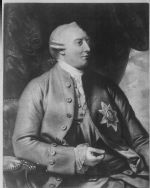 King George III of England
King George III of EnglandKing George III Wouldn't Listen
But as the British government tightened control, imposed restrictions and taxes, that trust began to crack. The colonists believed the government needed the consent of the people, but the rulers across the ocean weren’t considering the people’s needs.
“No taxation without representation” became the rallying cry of the colonists. The idea of self-rule became not only attractive, but imperative.
The Boston Tea Party - And Consequences
The Boston Tea Party is a revered part of America’s lore. Revolting against what they saw as unfair taxation, colonists made a statement the King couldn’t ignore. London hit back with The Coercive Acts (called the Intolerable Acts by the colonists), a series of four laws that:
· Closed Boston’s port
· Limited the self-government of Massachusetts
· Allowed the governor to move a trial (eliminating the right to trial by one’s peers)
· Required all colonies to quarter British military officials
The colonists resented being punished for speaking up for their rights. Step by step, colonists saw their charters and customs pushed aside.
Impact of Enlightenment Philosophers
John Locke, an Enlightenment philosopher, heavily influenced America’s founders. Locke argued against the Divine Right of Kings, which held that every man was born a slave to the natural born king.
Thomas Paine’s pamphlet, Common Sense, also helped persuade colonists they had God-given rights of freedom and self-governance. He saw monarchy as a necessary evil, useful only in controlling human vices. He argued that the American colonists had the capacity, and the right, to govern themselves.
Enlightenment thinkers influenced many colonists to focus not on “fixing the empire” but on building a new one.
Petitioning the King
Not all colonists were ready to break with London. Many still felt they could reason with the King to restore their rights.
So, the colonists convened the First Continental Congress in 1774, and the debates began. They adopted a boycott of British goods, the Articles of Association, and petitioned the King calling for a repeal of the Intolerable Acts.
The King’s rejection of the petition escalated the tensions leading to the Revolution. Debates continued over whether a clear break was necessary.
The Shot Heard 'Round the World
As they debated, the first shots were fired at Lexington. The “Shot heard ‘round the world” marked the beginning of armed conflict between American colonists and British military. The British forces then marched from Lexington to Concord where they met a larger force of colonial militiamen. The British were forced to retreat back to Boston.
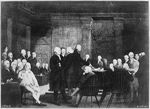 Second Continental Congress
Second Continental CongressThe American Revolution was underway. The Second Continental Congress formed the Continental Army and named George Washington commander.
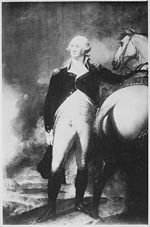 George Washington
George WashingtonStill, they sent another petition to King George III, the Olive Branch Petition. He refused to accept this petition too. Now facing British soldiers and closed doors, the colonists began to agree their best option was forming a more complete union.
Independence Beckons
The Second Continental Congress drafted a group of five delegates in June 1776 to draft the Declaration of Independence. The five members were: Thomas Jefferson (principal author),
John Adams, Benjamin Franklin, Roger Sherman, and Robert R. Livingston.

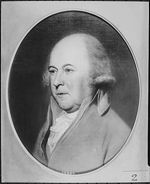
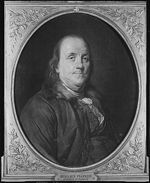
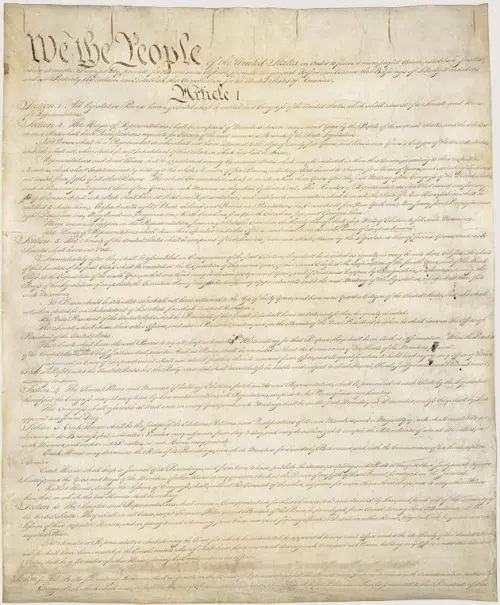
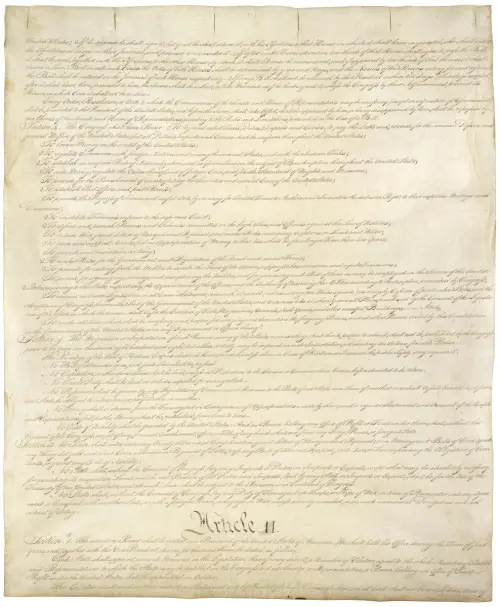

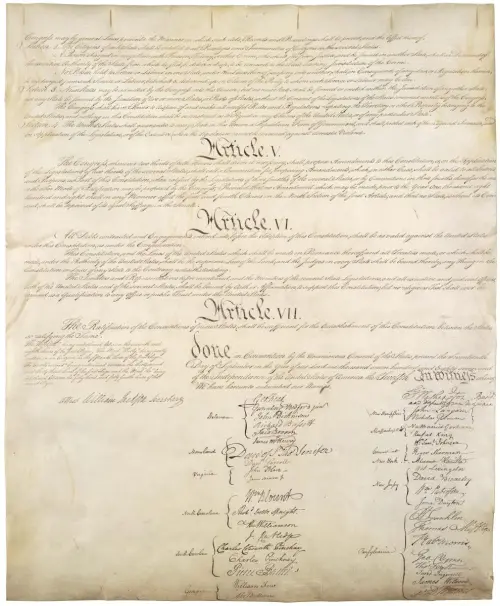
Argument, discussion, drafting and redrafting continued as they finalized the Declaration. They cut a passage condemning the slave trade to keep the southern colonies united with them. It was an imperfect compromise, but it kept the discussion going. A further compromise, The Three-Fifths Compromise, was just as difficult. Again, discussion and redrafting continued.
Allies and Peace
The states endured many hardships, not the least of which was sending troops and supplies to the Continental Army. They would need coordination and allies to win the war. Benjamin Franklin secured a French alliance, which helped turn the war in favor of the Americans.
After the battles and hardships, the Treaty of Paris in 1783 recognized the United States and finally ended the fighting.
Building the Nation
But as the war ended, the struggle to solidify the union was just beginning. The Articles of Confederation, officially ratified in 1781, had created a loose union that held the states together during the war, but they were ineffective during peacetime. Congress couldn’t levy taxes or regulate trade. Debt was continuing to grow.
Shays’ Rebellion in opposition to high taxes and harsh economic conditions (August 1786-February 1787) exposed the weakness of the Articles of Confederation and made a persuasive argument for a stronger national government.
The Constitutional Convention met in Philadelphia in 1787 and began hammering out the details for a stronger constitution. There were fierce arguments, but the colonists kept the larger goal in view: a government strong enough to endure and free enough to deserve loyalty.
Compromise Binds Us Together
After much debate about fair representation, a compromise between the smaller states and the larger states resulted in the two houses of congress. The House of Representatives was based on population. The Senate would have two senators for each state, regardless of population.
Neither side got everything they asked for, but both sides got enough.
Slavery was another point of argument. The Three-Fifths Compromise and other clauses relating to slavery were moral failures but kept the union together allowing debates to continue.
These compromises, tragic though they were, allowed our fragile country to hold together at a critical time. Importantly, they allowed future citizens to make changes as the country matured.
The Importance of Our Bill of Rights
There was debate over federalism, checks and balances, and the strength of the executive branch. Fresh from the abuses of power by the British King, Anti-Federalists feared a strong central government. To protect citizens’ rights, they preferred to give more power to the states.
Favoring a strong central government, the Federalists promised a Bill of Rights to protect citizens, and they penned essays under the title “The Federalist” in New York newspapers supporting their views.
The Constitution, centerpiece of our democracy, is the result of open conflict shaped into workable order.
The Pressure and the Dream
How did our founders work together, even through so many opposing views? Imagine the pressure they felt. If they failed, their dream of a free country would vanish, and their very lives would be endangered.
They felt the pressure, but it pulled them together. They agreed on a central purpose: Create a free and unified country of self-rule.
They agreed on ground rules, used committees to hammer out details and compromised where necessary. They planned for revision through amendments.
Most importantly, they kept talking. They kept their dream in sight.
The Risk We Face Today
In America today we feel pressure too. Our country is angry and polarized in a way it hasn’t been in our lifetimes. Some days it feels like we’re all yelling, and no one is listening. I’m not sure whether we need a referee or a therapist.
If we can’t talk it out, we risk losing the country our founders worked so hard to create. Who knows what America could become if we fail to work together?
That risk should bring us together, not tear us apart.
Let’s start where our founders started. Let’s listen to each other. Let’s take the volume down enough so that everyone can be heard.
I believe we can make progress. We owe it not only to ourselves, but to future generations. Let’s keep the dream in sight.